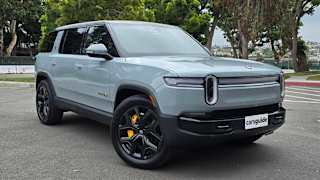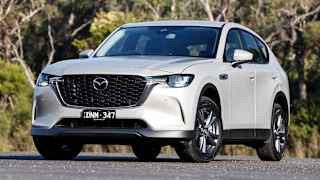The Ioniq's familiar Hyundai switchgear makes it largely feel like the brand's i30 from behind the wheel, and this is a very good thing. This car is immediately ergonomic and user friendly, although the seating position is a little high, preventing it from feeling particularly sporty.
The Ioniq emits a pleasant choral tone at low speeds, which enhances the perception you're steering something from the near future. It also helps alert pedestrians nearby, which was one of my pet peeves about the silent Tesla Model 3. The noise is interesting enough that you'll have people peering closely at it to figure out what's going on. It even gets louder as you accelerate, as though the motor is making it and it's not entirely artificial. Cool.
This EV is silky smooth to drive and accelerate. Like other Hyundai electric cars, it doesn't have the unleashed electric torque of a Tesla, but it feels well attuned to driving around in an urban scenario, with viscous acceleration and regenerative braking. I was surprised to discover how heavy it feels, though.
I was expecting it to be heavier than its hybrid or PHEV counterparts but compared to the hybrid Prius I drove only a week or two prior, the electric Ioniq feels obese.
Upon closer examination, the Ioniq electric weighs 200kg more than the Prius, at 1575kg. It doesn't sound outrageous but it's enough to have this little car's suspension wallowing and occasionally crashing over bumps that wouldn't bother its hybrid versions or, indeed, the Prius.
This is perhaps emblematic of the issues facing smaller EVs like this. To get more than 300 kilometres of range, they need a lot of heavy batteries. Manufacturers can better hide this with the existing heft and better suspension travel of SUVs. The Kona EV, for example, feels less hefty than this little hatch.
Regardless, the electric motor dispatches with the Ioniq's weight easily when you really want to accelerate, and while it doesn't provide the hold-on-for-dear-life acceleration of Teslas, it's more than enough for a daily commuter. Unlike the Prius, the Ioniq does genuinely feel pretty sporty in the corners, thanks to steering that's on the heavier side, and a firm, responsive damper tune.
The regenerative braking is particularly good on the Ioniq. Using paddle-shifters usually reserved for changing gears, the Ioniq instead lets you alter the amount of regenerative braking available. Feel like coasting a bit faster? Flick the Regen braking off. Feel like maximising economy and range? Max it out in the drive mode of your choosing, and you can use it as essentially a ‘single pedal' car (you can go or stop by using the throttle alone).
It even has an auto mode, which I found to be pretty intuitive. Paired with a few different display options to let you get superior feedback on how you're tracking with battery usage, it's brilliant, and more electric vehicles should take note.
So, this is an eco-focused electric car that is reasonably engaging to drive if a little heavy. Most importantly for the electric era, it's highly interactive, helping you really understand how your inputs are affecting its battery usage, and how you can better drive it to maximise range.






















































